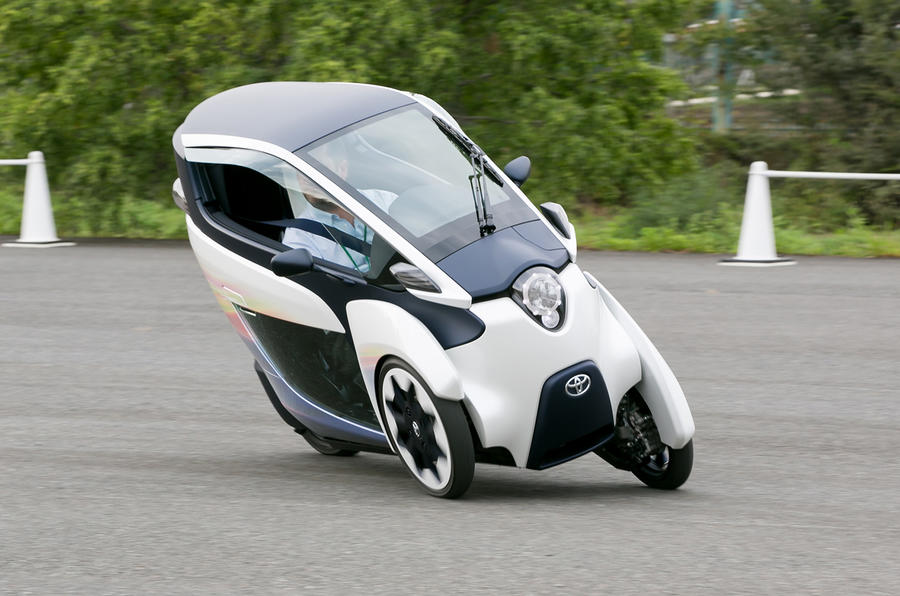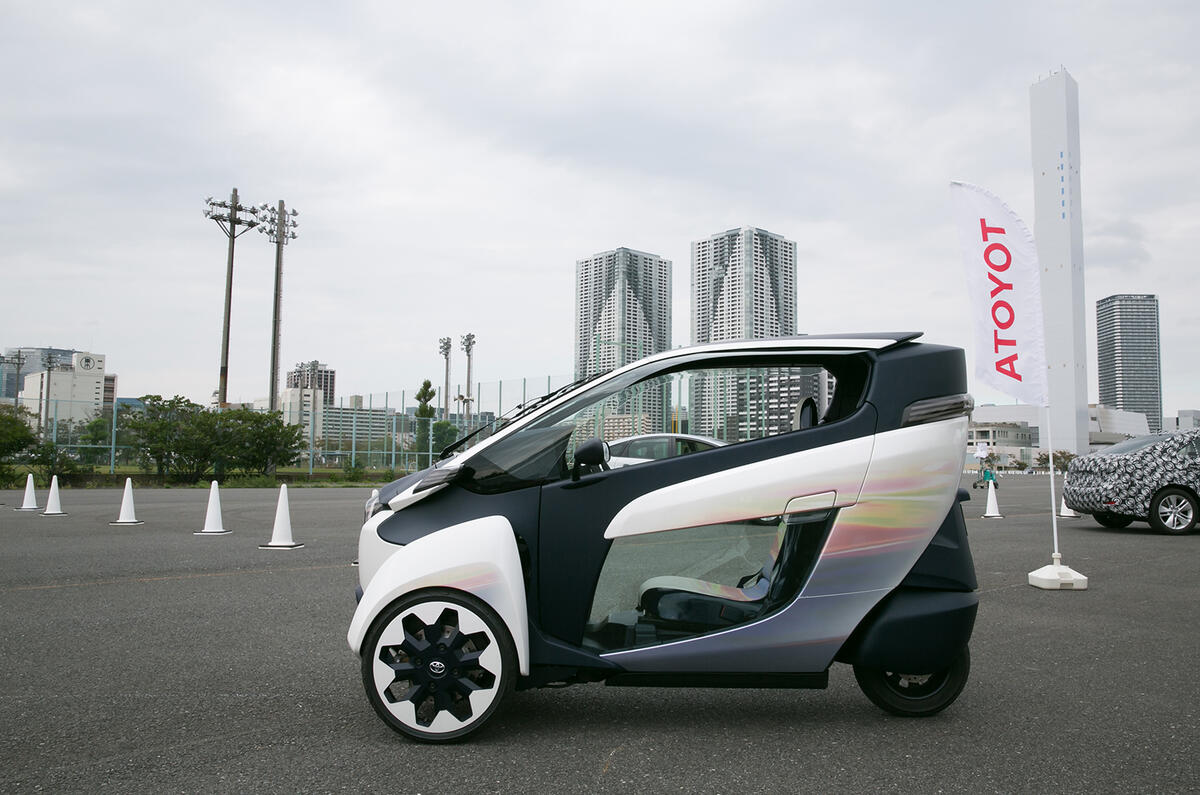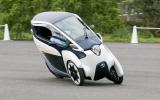What is it?
In the words of its creator Akihiro Yanaka, the Toyota i-Road combines “the manoeuvrability of a motorbike, with the economy and stability of a small family car.”
A tandem two seat three-wheeler, it tilts into bends while being steered from the rear by a tiny single wheel. Propulsion comes from a pair of electric motors located within the front wheels. In the UK it would be classified as a scooter, allowing it has a slightly disappointing 28mph top speed – for Japan this climbs to a more exciting 37mph - and has a range of just over 30 miles when driven with a bit of restraint, and 25 miles if you can’t resist extracting the most of its darting charms. It takes three hours to recharge.
The i-Road is intended purely as a set of urban wheels and promisingly, Toyota plans to trial it in both Toyota City, near Nagoya, and Grenoble in southern France as part of a 70-strong fleet of tiny electric tandem two-seaters entering service in autumn next year.
The other vehicle, known as the COM, is a four-wheeler similar in concept to Renault’s Twizy, if less sexy looking. The i-Road, by contrast, looks very sexy indeed. Styled by Koji Fujita, this is the concept as it appeared at last year’s Geneva motor show, from its ‘50s locomotive style Cyclops headlight to the slender casings that cap its tilting front wheels and the horizontal strip of its tail-lights. It’s less than 2.5m long and rides on a 1700mm wheelbase, but the critical statistic is its 850mm width.
That’s about the same as a motorbike, making the i-Road very easy to thread through city streets, while allowing no less than four of them to occupy the parking space of a single car.
Its mechanicals are no less interesting than its looks. The slender front wheels are jointed to a yoke system that allows them to tilt – imagine a see-saw with a pair of vertical struts descending to the wheel hubs from either end – while the rear wheel steers at a variable rate depending on your speed, turning more tightly for a given lock at lower speeds. Manoeuvrability is the key.
With two motors up front the i-Road needs quite a complex control system in order that they don’t fight each other in a straight line, besides enabling one to spin more slowly than the other in a turn. With only two kilowatts apiece to dispense – that’s a little over 5bhp – minimising the i-Road’s weight has been critical, the three-wheeler weighing around 300kg in concept form. However, this example uses an aluminium chassis that would be too expensive for a production version, which would probably resort to steel.
Weight-saving is why it does without a heating and ventilation system but there’s some weatherproofing, the upper glass sections of the three-quarter-height doors stopping a few inches short of the roof. The lower portions of the doors are glass too. This arrangement is sufficient to allow you to drive without a helmet, making the i-Road much more instant to use.





















Join the debate
Add your comment
Market?
Claustrophobic?
The cabin of the i-Road certainly looks snug.
Toyota COM (Images 7-9). Where's the side impact protection?
Don't see the point
Afraid I just don't get it. Yes in cities, but even a public transport hater such as myself would rather take a bus/tram/rickshaw than have the ownership hassle of one of these. I can't see a market for them other than a small handful of people that would never recover the development costs. Sounds and looks like fun though.
We don't have a forum here anymore, but while in Lanzarote I saw what I thought was an excellent idea. Basically a set of traffic lights with warning lights as you approached, that if you exceeded the speed limit it turns the lights red, and you have to stop - brilliant! Don't know if it was hooked up to a camera for fining red light runners though.